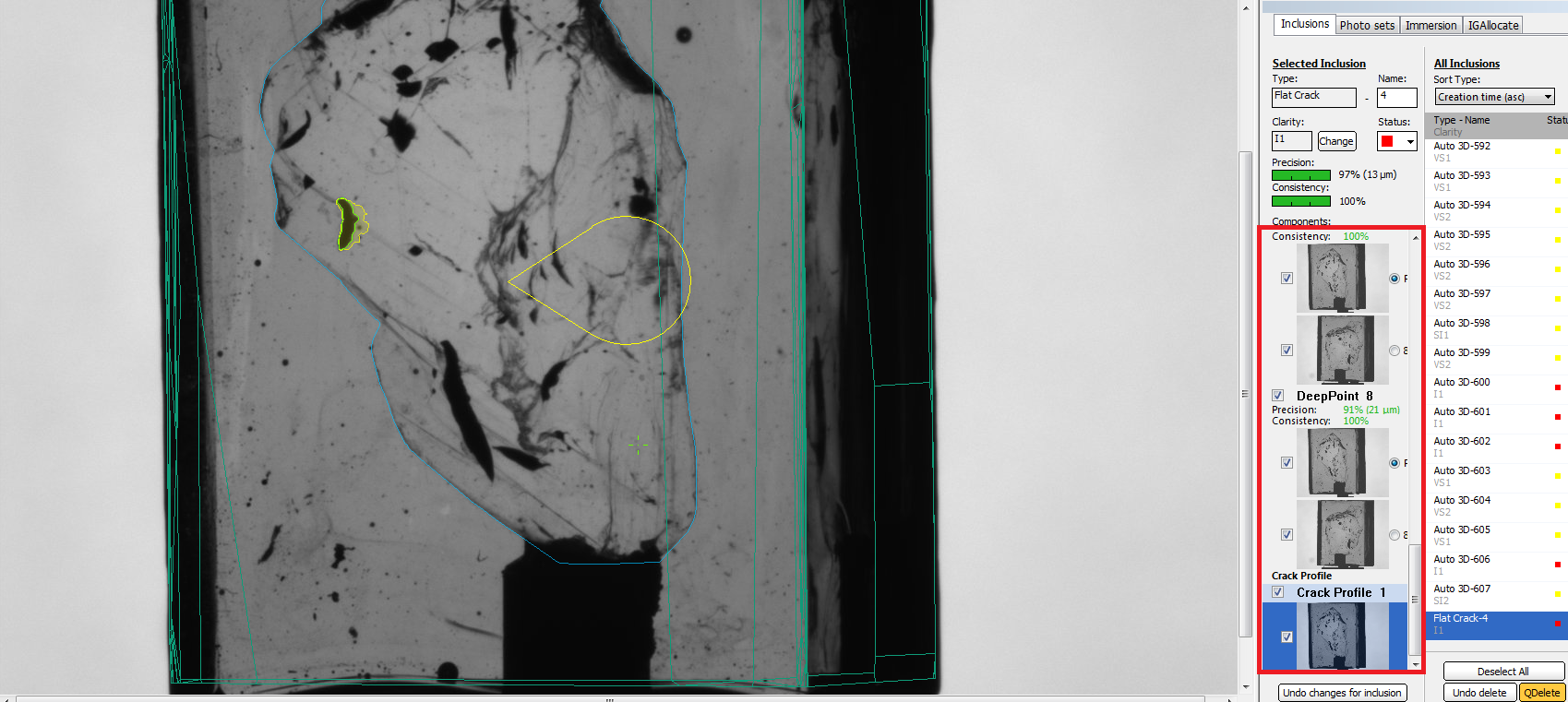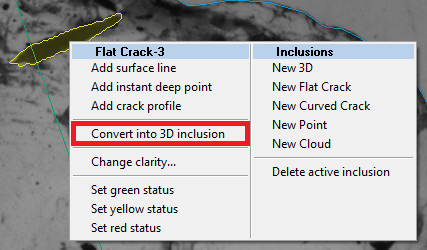...
- Select this Auto3D inclusion by inclusion selector.
- Right-click on this inclusion
- Choose a menu an option "Convert to simple flat crack" in Auto 3D-<inclusion number> section
...
- Select this Flat Crack inclusion by inclusion selector.
- Right-click on this crack
- Choose a menu an option "Convert into 3D inclusion" in Flat Crack-<inclusion number> section
...
In this cases you may manually edit inclusion changing its profile and deep points. On the image below you can see the panel for crack editing (highlighted with red), wrong crack profile (yellow) and manually corrected crack profile (green):
IMPORTANT: Basic pipeline of inclusion plotting using new program
For optimizing your time at quality control stage please follow simple pipeline of processing inclusions:
- Run autoplot
- Save results in some temp oxg file (we do it just in case before editing)
- Check plotted flat cracks one-by-one. If you see a bad flat crack roll back it to 3D inclusion (see chapter "Rolling back the convertion to flat crack") or edit it manually (see "Editing autoplotted flat crack").
NOTE: If the selected inclusion is not a real flat crack you should do roll back. If that is a flat crack and the algorithm calculated bad profile or wrong plane - try to edit crack manually. If that is a flat crack but it is difficult to edit inclusion manually - delete inclusion and build it manually. - Look at all Auto 3D inclusions. If you see some real flat crack, but it was plotted as Auto 3D, try to convert it to flat crack (see "See semi-automatic flat cracks"). If there is no option "Convert to simple flat crack" in Auto 3D-<inclusion number> section - plot this flat crack manually. After convertion check the quality of convertion and then depending on the result try to edit crack manually or delete inclusion and build it manually.
Please, learn this basic pipeline and use it during quality control!
Features:
- Improved subsurface inclusions processing
- Automatic crack processing (1-st version). Only flat cracks are supported.
- inclusions classification into cracks and not cracks
- crack plane estimation
- Semi-automatic 3d inclusion into flat crack conversion
- menu item for conversion of 3d inclusion into flat crack and back for the inclusions that seem to be a crack
- ability to roll-back the automatic crack with the same menu
- menu item for conversion of 3d inclusion into flat crack and back for the inclusions that seem to be a crack
- Crack material reconstruction and rendering
- crack material reconstruction after first switching to Photoreal mode and active diamond selection (takes a little while, no progress bar). The solution has to be already allocated and HIG photos should be loaded.
- crack visualization inside active brilliant (in Photoreal view)
- crack material reconstruction after first switching to Photoreal mode and active diamond selection (takes a little while, no progress bar). The solution has to be already allocated and HIG photos should be loaded.
...


